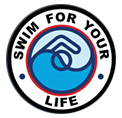AND SO I BECOME A LIFEGUARD
I was blessed with the country secondary schooling I had. At Wingham High it was compulsory in the summer that the whole school would walk to the local pool and participate in swimming for sport. Our local pool was not heated and we could only swim in the summer months. As I was a very proficient swimmer, along with 3-4 others, we started doing our Royal Life Saving medallions and certificates.
First the Bronze Star, then the Bronze Medallion, Bronze Cross, Award of Merit, until I was the last one standing with another year of High School and another chance to get the top Royal Life Saving Society Award….The Distinction Award. It is an interesting exercise to look up these awards and understand what is required to pass them. Different rescues are learnt, detailed theory demanding high level understanding and a challenging swimming component. This was always a long distance swim made up of normal swimming and life-saving techniques as well which had to be done within a certain time frame. I had to go to Sydney to actually sit the theory component of the Distinction Award which was very daunting. I did get the award which was a very proud moment. I loved doing the awards and was very thankful to my school for making swimming a compulsory sport in our summers. And so, with all this knowledge and life saving techniques learnt,
I became a Lifeguard, initially around a pool and soon after at the beach. I preferred being on duty at the beach and would encourage anyone to get involved in that world, especially as a teenager.
The Royal Life Saving Society was formed in NSW in 1894 and in 1924 a dual system of lifesaving was established with Surf Life Saving Australia being responsible for ocean beaches and the Royal Life Saving Society Australia responsible for all other waterways. So we can see, from very early on, Australia took the safety of others in and around water, extremely seriously.







